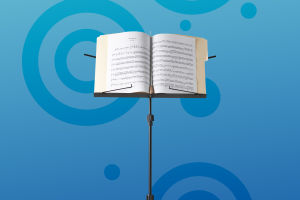Ikebana, the art of arranging fresh or dried flowers in vases or other containers, has a rich history and is widely cherished for its decorative and celebratory purposes.
Flower arrangements serve as a medium to showcase the inherent beauty and grace of flowers while also conveying emotions and meanings.
The process of flower arranging entails several fundamental steps, which are as follows:
1. Prepare the necessary tools and materials, such as vases, flower knives (or pointed scissors), regular scissors, flower-preserving agents, and water.
2. Select appropriate floral materials based on the desired purpose and theme of the arrangement.
One may choose from fresh flowers, leaves, and stems, or opt for dried or artificial bouquets.
3. Prepare the flowers by trimming their branches to the desired length and cutting the stems at a 45-degree angle to enhance water absorption.
4. Choose a suitable vase that complements the floral materials and the desired arrangement style.
Options range from transparent glass vases to those with distinctive shapes or materials.
5. Design the flower arrangement according to personal creativity and aesthetic preferences.
This involves deciding on whether to use a single floral material or a combination of various elements, as well as incorporating complementary components like leaves and branches.
6. Employ proper techniques while inserting the trimmed flowers into the vase.
Ensuring a balanced and stable arrangement is crucial, to avoiding overcrowding or imbalances.
7. Maintain proportion and layering within the flower arrangement by harmonizing the height and size of the flowers, thereby creating a sense of balance and depth.
8. Regularly change the water in the vase to keep it clean and fresh. Additionally, adding an appropriate amount of flower-preserving agent will help prolong the flowers' lifespan.
9. Consider the environmental conditions and surroundings of the flower arrangement.
Adapt the choice of floral materials and the arrangement style accordingly, taking care to shield the flowers from direct sunlight or strong winds.
Flower arranging allows for personal creativity and artistic expression, enabling individuals to design unique and captivating works of art that provide pleasure and enjoyment.
The origins of flower arranging can be traced back to ancient civilizations, with its influence spanning diverse regions worldwide.
Here are some notable regions associated with the origins of flower arranging:
1. China boasts a long history of flower arranging dating back over two thousand years.
The Chinese art form is often used for celebrations and decorations, with strong ties to Buddhist and Taoist ceremonies.
Chinese flower arranging emphasizes the natural aesthetics of balance and harmony, frequently incorporating flowers symbolizing wealth, auspiciousness, and longevity.
2. Japan introduced the art of flower arranging known as Ikebana, originating in Buddhist temples during the 6th century AD.
Ikebana focuses on simplicity, natural beauty, and balance, with a deep-rooted connection to meditation and spiritual practice.
It serves not only as a decorative art but also as a means of attaining harmony with nature.
3. In the Western world, flower arrangements were employed in ancient Greece and Rome during religious ceremonies and banquets.
However, it was during the Renaissance that the art of flower arranging in Europe witnessed significant development and flourished.
Flowers became widely utilized in courts and aristocratic societies as a means of showcasing opulence.
European flower arranging emphasizes symmetry, vibrant colors, and intricate designs.
4. Other regions around the world have also developed their unique styles of flower arranging.
For instance, Korea practices Huadao or Sulwhadang, which accentuates natural harmony, while India is known for its Rangoli, a form of flower arrangement that involves intricate floral patterns drawn on the ground.
Despite regional variations, the essence of flower arranging remains consistent in its celebration of the beauty of nature and the expression of emotions and meanings through art.
The evolution of flower arranging throughout history is intrinsically linked to humanity's reverence for nature, the pursuit of aesthetics, and the need for celebration and embellishment.


